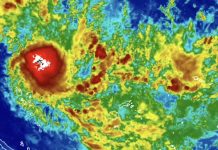Drilling for minerals in the deep sea could begin soon, as the regulatory body moves to finalise rules and could start considering mining applications this month.
But there’s still much we don’t know about the potential impacts of deep sea mining and it’s causing concern, particularly for ocean-dependent communities.
The Pacific holds the world’s largest tuna industry and tuna fisheries are known to operate in areas being explored for mining.
An irreversible impact on these fish stocks could be devastating for Pacific Island communities who depend on the ocean for food and their livelihoods.
Seafood caught near mining sites could be contaminated with metals.
Climate change and increased activities near spawning areas can impact available stocks, resulting in a loss of income, employment and food supplies.
As tuna is a highly migratory species, the effects in one area could potentially be transferred to other areas otherwise untouched by mining but which depend on the fishing industry.
Various tests and simulations show how mining can adversely affect seafloor organisms and that their recovery rates can be slow, both for microbes and animals.
But it’s not just limited to the seafloor. The impacts extend to the water column above.
The materials mined on the seafloor will be brought to the surface via riser pipes, which will create light and noise pollution in dark environments where animals have adapted to see extremely low bioluminescent light levels.
The impacts of changing sound levels are also poorly understood.
Impacts from discharge (sediment-lade) plumes can be minimised by releasing it to the seafloor, but that is costly.
The release depth of these plumes is currently not being considered in draft mining regulations.
However, there is an expectation plumes will be released at some depth in the ocean below the sunlight zone (upper 200 metres of the ocean which still sees the sunlight), where photosynthesis takes place.
This could potentially avoid direct effects from discharge plumes on commercial fish such as tuna and billfish.
But a release in the twilight zone (between 200-1,000 metres below the ocean’s surface) can still have indirect consequences for fisheries.
Many animals from the twilight zone, including fish, crustaceans and squid, migrate to the surface at night for feeding, while hiding in the deeper darker waters from predators during the day.
These vertical migrators are important prey for tuna and billfish.
Models predict these discharge plumes can cover 10 to 100km depending on factors like sediment particle size and depth of release (deeper releases will result in smaller plumes).
The discharge plumes will likely have elevated metal concentrations as ores break during collection, allowing metals to leak out and potentially get stuck to sediment particles.
Increased sediment concentrations in the water column will cause harm by reducing feeding rates. Predators will have trouble finding their prey and suspension feeders’ food particle concentration will be diluted by the sediment particles.
It can also harm delicate surfaces such as gills and induce stress on sea creatures.
All these effects can influence the growth, reproduction and survival rates of various organisms, with implications for the wider biological community.
Many nations with adjacent fishery industries are discussing the rules and regulations for deep sea mining at the International Seabed Authority, the governing body for deep sea mining.
They are in a position to consider these trade-offs as they are the most likely to be affected by increased activities on the seabed.
Fisheries could be treated as stakeholders in deep-seabed mining.
Regional fisheries management organisations — international organisations regulating regional fishing activities in the high seas — could become observers at the Authority or engage their member states which are also delegates.
The Authority wants an ecosystem-based approach to management and discussing the potential interactions between these different industries will fit in well with this aim.
The deep-sea is one of the least explored areas of our globe with numerous species we’ve yet to even discover. It provides many services for humanity, including climate regulation and fisheries, all of which we should aim to understand better before destroying.
SOURCE: 360INFO.ORG/PACNEWS















